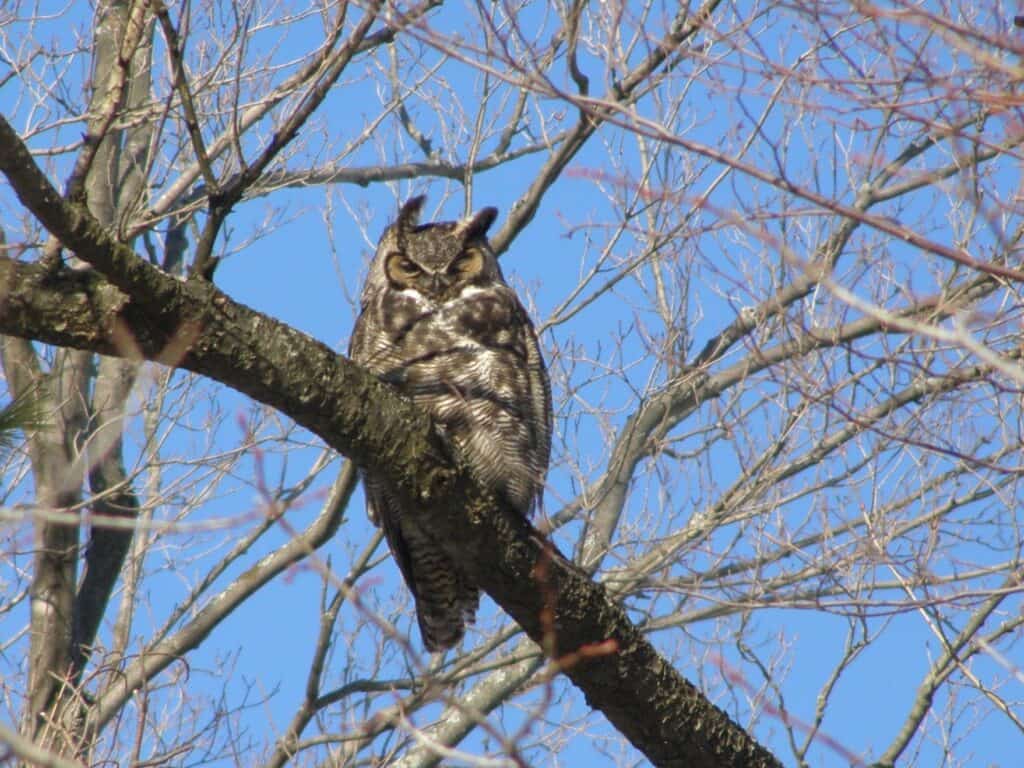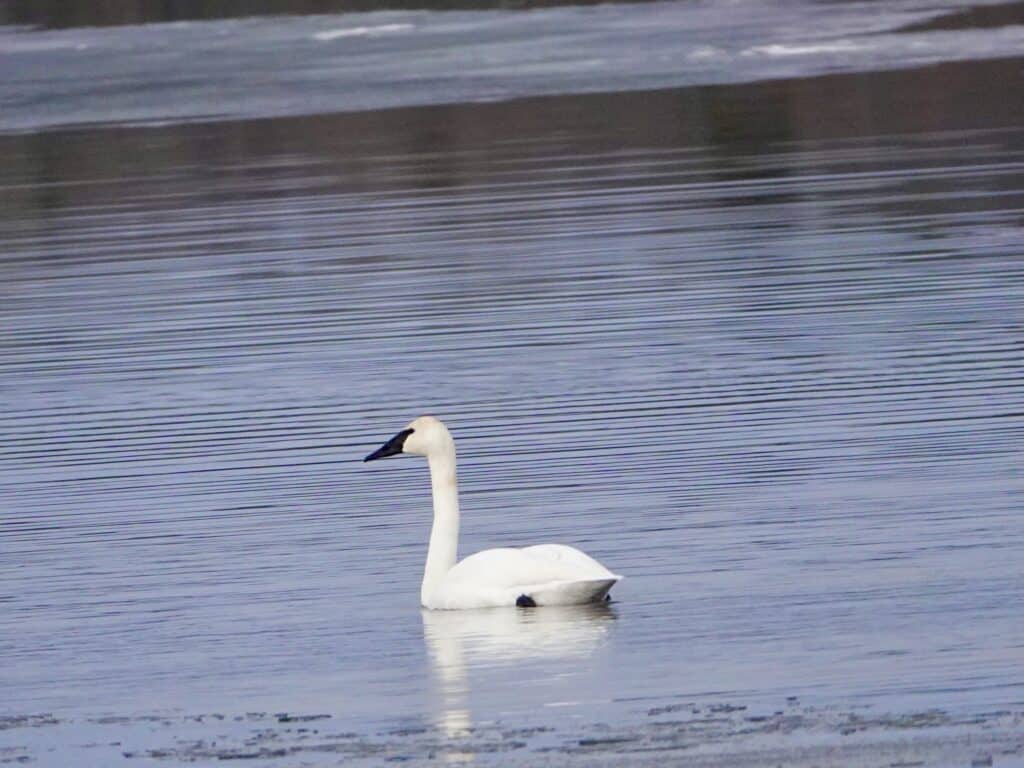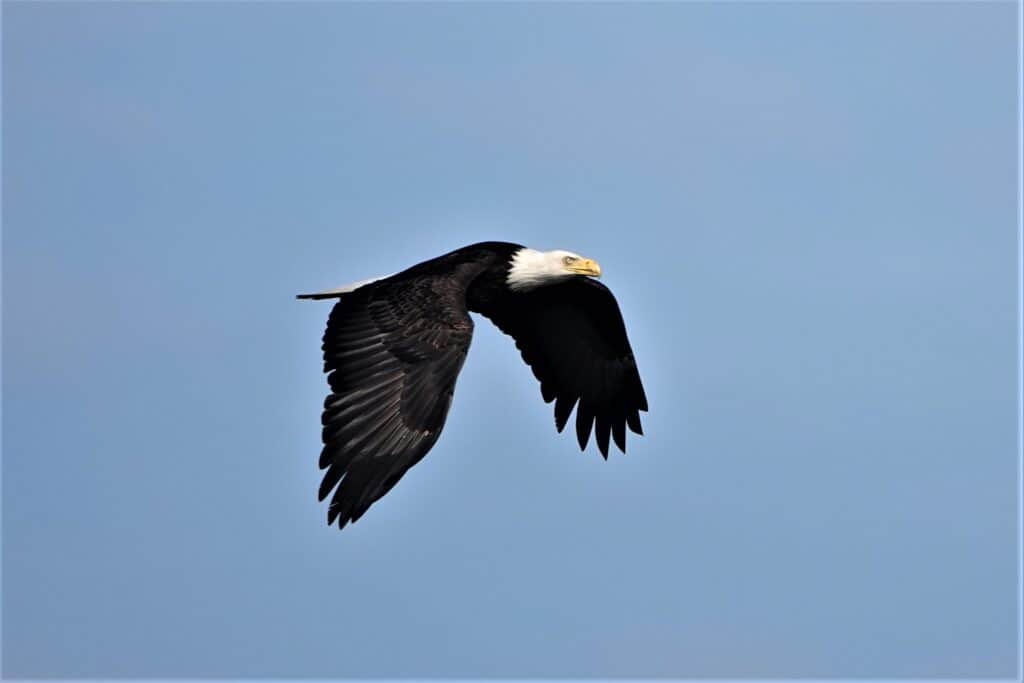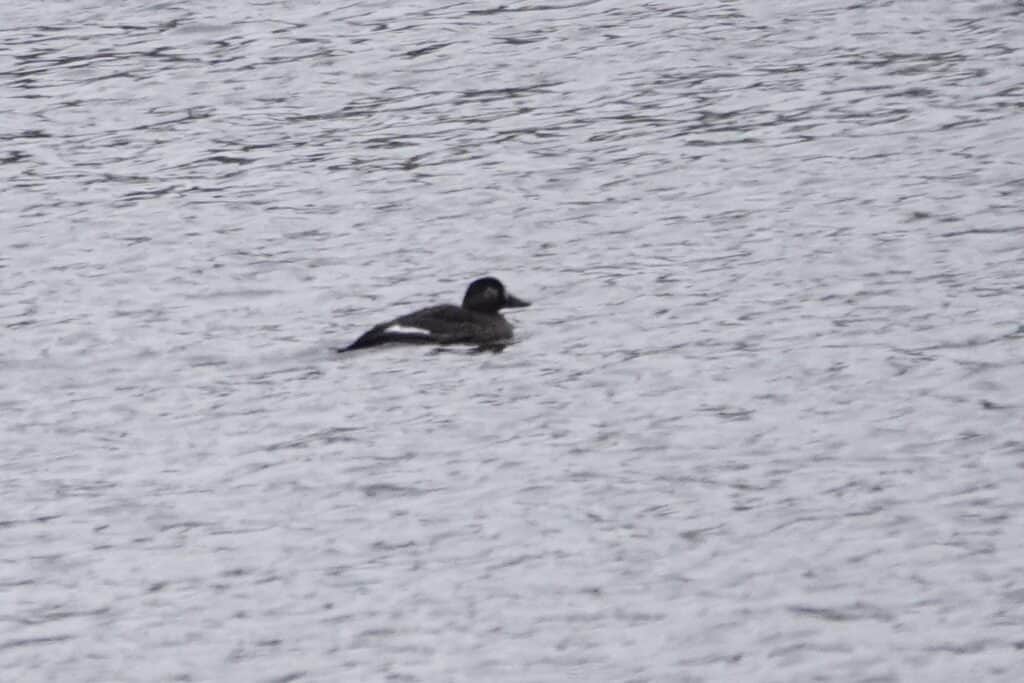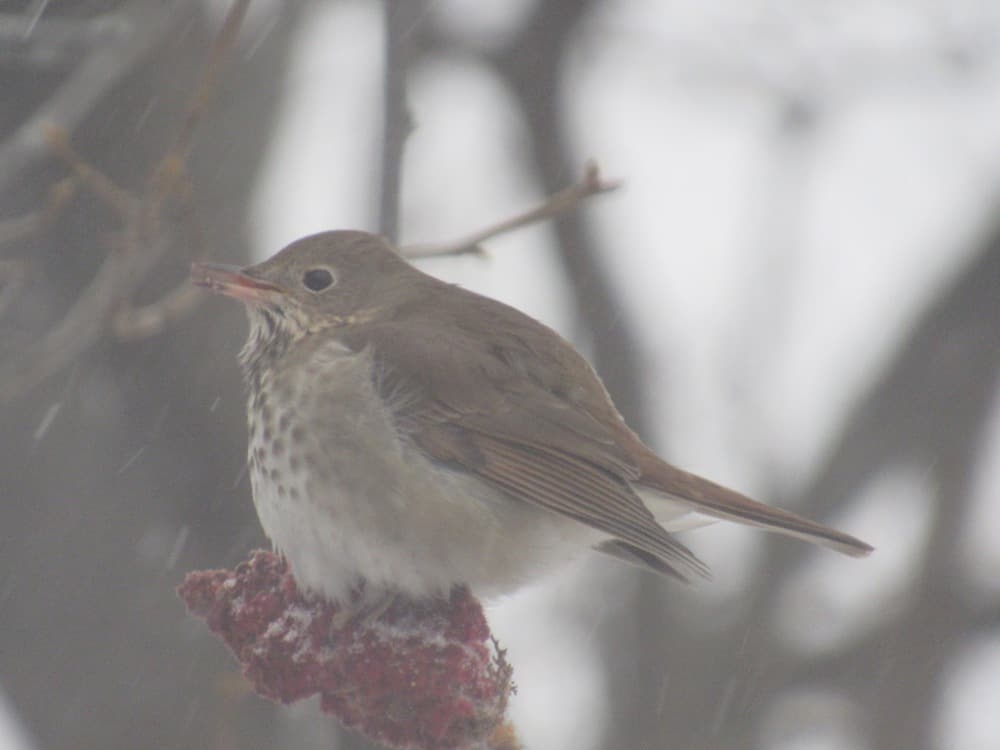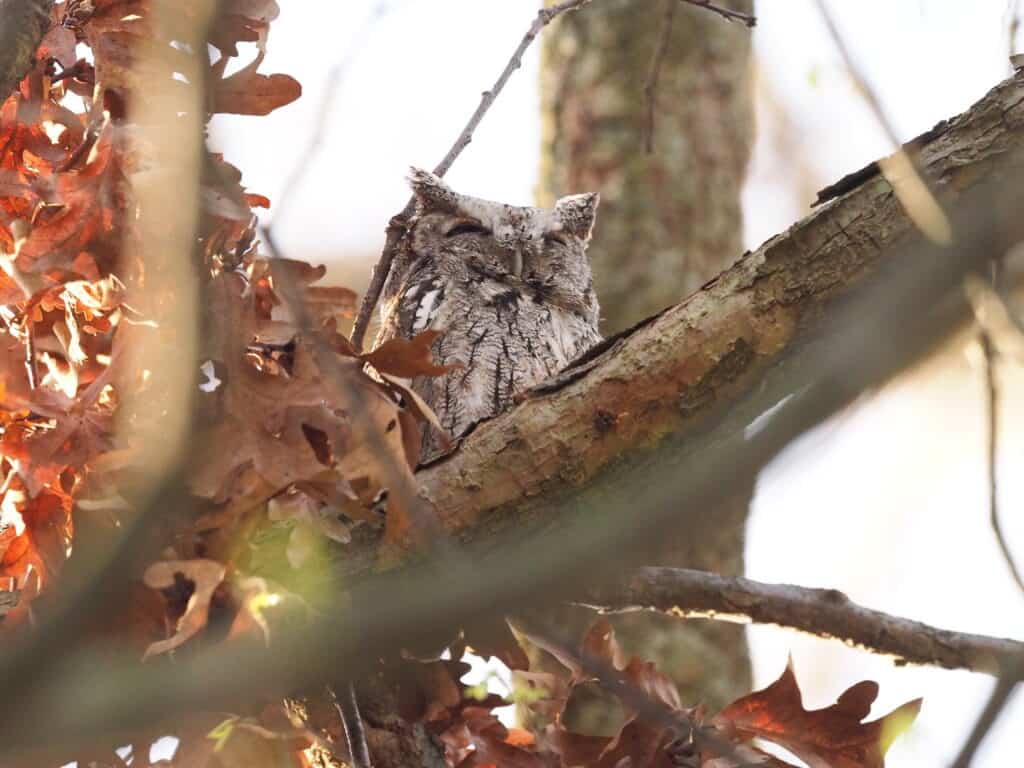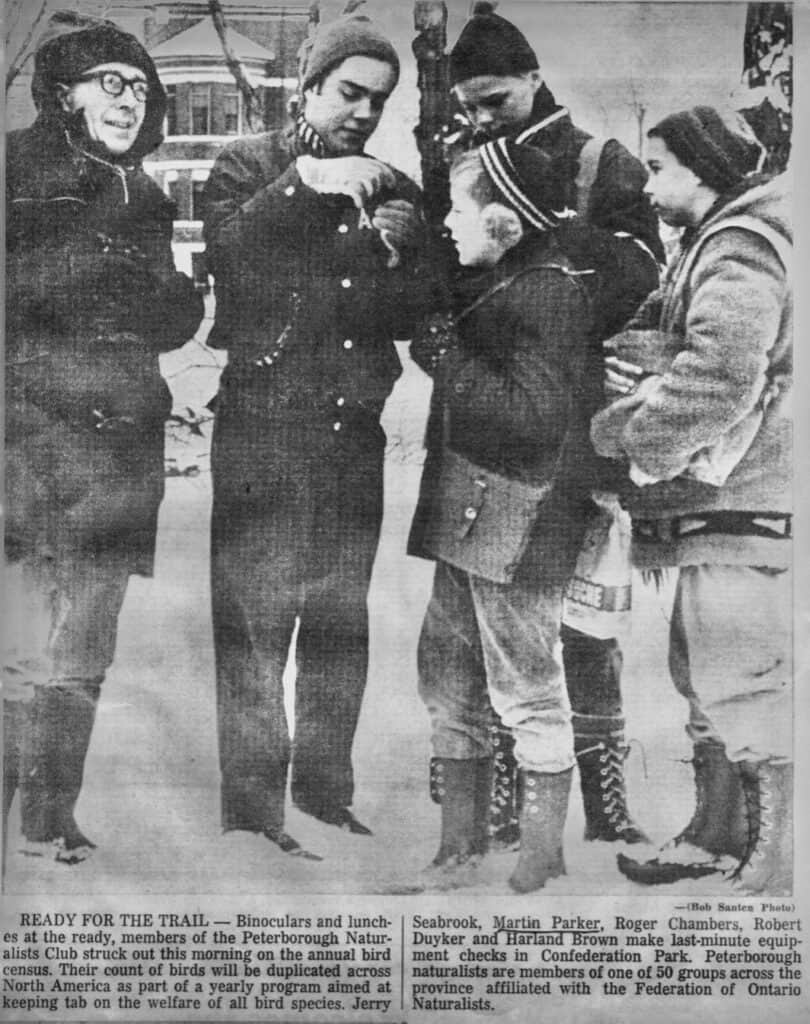Peterborough Examiner – January 7, 2022 – by Drew Monkman
A record 71 species tallied on the Peterborough Christmas Bird Count
As the full moon cast long shadows through a woodlot on the outskirts of Bridgenorth, the mysterious “whooo…whoo-hoo…who-who” song of a great horned owl echoed through the trees. Almost immediately, a second bird responded with the same pattern of hoots, only deeper. I was listening to a pair of owls “duetting,” a behaviour typical of the breeding season. The female sings first and then the male responds. Standing at the side of the road at 6 am on a cold winter night might not sound like everyone’s cup of tea, but the payoff can be wonderful, especially if you happen to be doing a Christmas Bird Count (CBC) as I was.
The 70th annual Peterborough Christmas Bird Count took place on December 19. According to count organizer Martin Parker of the Peterborough Field Naturalists, “the warmer than normal temperatures and near-record 91 participants were key factors in setting a new count high of 71 species. What’s more, 13 species showed up in the highest numbers ever.”
Between mid-December and early January each year, thousands of Canadian birders take a break from the holiday festivities to spend a day outside identifying and counting birds. CBCs began in Canada in 1900, when Frank M. Chapman proposed a switch from shooting birds to counting them. That Christmas Day, a community was born that included a small group of people who shared Chapman’s vision. In Canada, the community grew from two count circles in 1900 to 450 today. A CBC is organized at the local level, often by a naturalist organization. The count area is a circle, measuring 24 kilometres in diameter. The circle is then sub-divided into sectors, each of which is covered by a different group of birders.
Two counts are held locally – one centered in Peterborough and one centered in Petroglyphs Provincial Park. About twice as many species turn up on the Peterborough count, thanks mostly to the wider variety of habitat. The Peterborough count is the oldest citizen science wildlife survey in the Kawarthas.
Christmas Bird Counts are an international phenomenon. Last year, 2,459 counts took place of which 450 were in Canada, 1,842 in the United States, and 166 in Latin America and the Caribbean. An impressive 2,355 species were tallied with 664 in the U.S. and 284 in Canada. The total number of individual birds was 44.6 million.
Peterborough count details
Three species were recorded this year for the first time ever. Don McLeod and Colleen Lynch found six trumpeter swans on Lancaster Bay on Chemong Lake. Cathy Douglas spotted a white-winged scoter on Little Lake along the Beavermead waterfront (still present), and Don Sutherland and Martyn Obbard observed a golden eagle along the rail corridor east of the city. A second golden was recorded by Fiona McKay in the vicinity of Costco.
Maybe the biggest story of the day, however, was the 20 bald eagles tallied. This shattered the previous record of 13 in 2017. Clearly, this formerly threatened raptor is thriving in the Kawarthas. Eighteen white-throated sparrows also turned up which is seven more than the previous high. Equally notable was the 70 common ravens spotted. This is more than double the previous record and shows how quickly ravens are expanding their range southward.
Two species that are common at backyard feeders also made an appearance in record numbers. All-time highs were recorded for both dark-eyed juncos (1,097) and American goldfinches (1,397). The other record highs were hooded merganser (40), eastern screech-owl (8), belted kingfisher (5), yellow-bellied sapsucker (2), northern flicker (7), hermit thrush (3), European starling (6,485), and short-eared owl (3). Owls as a group put in an excellent showing with no fewer than six species showing up on count day.
As for low numbers, only 334 house sparrows were counted. Compare this to the 2209 found in 1981. House sparrows have been in a mysterious decline for many years now. “The number and variety of gulls found on the count was also low,” said Parker. “No glaucous or great black-backed gulls were reported until late December.”
Species totals
The species totals for the Peterborough count are as follows: Canada goose (2017), trumpeter swan (6), American black duck (11), mallard (671), white-winged scoter (1), bufflehead (10), common goldeneye (88), hooded merganser (40), common merganser (149), ruffed grouse (19), wild turkey (130), great blue heron (1), golden eagle (2), northern harrier (1), sharp-shinned hawk (2), Cooper’s hawk (10), bald eagle (20), red-tailed hawk (56), rough-legged hawk (1), ring-billed gull (67), herring gull (324), rock pigeon (2004), mourning dove (1134), eastern screech-owl (8), great horned owl (5), snowy owl (1), barred owl (4), short-eared owl (3), northern saw-whet owl (1), belted kingfisher (5), red-bellied woodpecker (22), yellow-bellied sapsucker (2), downy woodpecker (129), hairy woodpecker (78), northern flicker (7), pileated woodpecker (24), American kestrel (7), merlin (3), peregrine falcon (1), northern shrike (16), blue jay (517), American crow (557), common raven (70), black-capped chickadee (2195), red-breasted nuthatch (45), white-breasted nuthatch (216), brown creeper (21), winter wren (1), Carolina wren (1), golden-crowned kinglet (30), hermit thrush (3), American robin (891), European starling (6485), bohemian waxwing (3), cedar waxwing (345), snow bunting (142), American tree sparrow (427), fox sparrow (1), dark-eyed junco (1097), white-throated sparrow (18), song sparrow (2), northern cardinal (175), house finch (210), purple finch (15), white-winged crossbill (1), common redpoll (212), pine siskin (2), American goldfinch (1397), evening grosbeak (2), and house sparrow (334). Total individuals: 22,508.
The results of the Petroglyph count are not yet available, but I will include them in a future article.
Martin Parker
Volunteers like count compiler Martin Parker, twice president of the Peterborough Field Naturalists, make winter bird counts possible. Martin was recently profiled in a press release from Birds Canada. The 2021 count was his 60th consecutive year doing a CBC. The release stated that “even now, Martin goes above and beyond by serving as compiler for not one but two CBCs in Ontario. Congratulations to Martin for reaching the milestone of six decades of being a CBC champion!”
CLIMATE CHAOS UPDATE
RECOMMENDATIONS: I recently finished reading a truly inspiring climate fiction novel called “The Ministry for the Future” by Kim Stanley Robinson. This work of a growing literary genre called “cli-fi” inspires both hope and action. Set in the near future, it is both a story of how climate change will affect us in the years to come but also how people everywhere can come together to address this extraordinary challenge – mostly using solutions that exist already. Desperate and hopeful in equal measure, it’s probably the most original and impactful book on climate change I’ve ever read.
I also found time over Christmas to watch the Netflix movie “Don’t Look Up” starring Leonardo DiCaprio. Although the threat to humanity is actually a comet bearing down on earth, the movie is very much an allegory of the obstacles we are facing up when it comes to action on climate change: the unwillingness in much of the media to tell hard truths, the non-stop distractions delivered via social media, and politicians mostly focused on winning elections. Being more aware of what serious climate action is up against – and demanding change on these fronts – is vitally important in moving forward.
CO2: A key measure of how much climate progress the world is making is the amount of carbon dioxide (CO2) in parts per million (ppm) in the atmosphere and whether it is rising. The pre-industrial level was 280 ppm and the highest level deemed safe is 350 ppm. The graphic below shows the disturbing current readings.
TAKE ACTION: To see a list of ways YOU can take climate action, go to https://forourgrandchildren.ca/ and click on an ACTION button.
